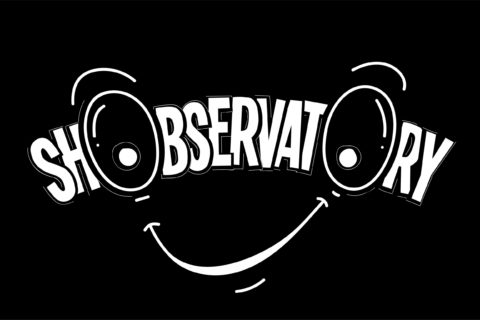We talk to Paul Earle, Principal, Earle & Company, and adjunct professor at Northwestern University’s Kellogg School of Management US, about why now is a great time for innovation.

What role then do research and insights play in uncovering unmet needs and helping to make new brands successful? “That’s where it begins. A successful brand is a manifestation of the underlying insight and discovery. And the brand and the insight should be inseparable. The brand is the insight – it’s the same thing – just expressed differently.”
Given the startup initially involves just a few people, at , what point should research be involved?
“One of the precepts in my company’s manifesto is that the best creative output usually takes place within the first 72 hours of tackling a problem. Things start to lose their signal strength and even move backwards past that point. This includes insights, as its not going to get any clearer or more actionable after that.”
So are research tools that researchers use like online communities helpful in this kind of instinctual innovation? “I think so but I prefer innovation and insight endeavor to be fast. They should respect the instinct of the researcher because they are usually correct, and if you spend too much time on it, you begin to second-guess your judgment, if you look hard enough you can always find contradictory evidence. I deeply trust the instincts of good marketing and innovation people but instincts are created and informed by insights, and you can’t have one without the other.”
Earle adds that the most important attribute is a clear signal. “This means an idea that has not been compromised by process, where the design is true to the vision of the designer and entrepreneur, the language is clear and has not been altered for any customary protocol. Just like a person who is firm in their beliefs and stands for something and you know who they are and what matters, that’s attractive. I think that consumers are drawn to brands that send clear strong signals – signal fidelity which communicates who you are. The characteristic of being an individual authentic brand is what sets it apart.”
A golden era
Earle seems to be implying that now is a great time for innovation. Is that because consumers are more open to new offerings and is the greater diversity in product offerings a result of more diverse consumers? “I define diversity in this context to include diversity of thought, preference, culture and style. Consumers are becoming accustomed to seeking and accepting new offerings in categories where that would have been ludicrous to imagine 15 years ago. They are looking for new ideas from new places that tackle problems in new ways.
“I believe in innovating for tribes – small groups of passionate people who are brought together by behaviour, beliefs, symbols and language. Their demographic profile is irrelevant and runs the gamut. Tribes don’t come together over race, age or sex or where they live, rather by what they are interested in. You design for people who identify by passion and interest.”
This sounds like a familiar story with products like craft beer that are taken up by small groups of passionate fans where the more successful ones are eventually bought up by bigger brands. So should larger brands try to compete with an emerging brand or simply bide their time and buy it up instead?
“Big companies need to start creating new brands again. In the 2010s, many were putting all of their innovation efforts behind a relatively short list of their big powerful global brand properties. For instance Kellogg’s used their Special K platform as the housing for almost all of their innovation efforts. That was ultimately very limiting because big brand flagship platforms are powerful but they are not without risk and there are only so many chances you are wiling to take with a property like that. It’s better to create new brands that are not saddled with the fear of failure and conservatism that you see with a big global flagship brand. “
The playbook
It is striking that several of the founders interviewed by Earle had prior experience of launching breakthrough brands so is that where the expertise lies?
Earle comments “Before COVID, I was talking to big companies all over the US and emphasizing that disruptive categories follow a playbook. There are some noted differences and challenges to what corporates can do but they also have more resources than the entrepreneurs so it is a level playing field. There is a playbook they can follow to do what these external entrepreneurs are doing. If they follow the playbook and do the five things I mentioned earlier, they can do it too.
“It’s easier than ever before to create a new brand from scratch, that’s what my company does all the time going from concept creation to design to naming. It’s easier because of direct to consumer ecommerce, more advanced habits, and you can get a new brand created and commercialized very quickly whereas before it would have been much more expensive and time consuming.”
Design and the distribution model are mentioned time after time in Earle’s book but why are they are so important?
“Design works at an emotional and irrational level and a product in a beautifully designed package will out-perform the same product in an uninspired package a hundred times over. Everything is a design opportunity and if you can design in a way that makes people feel better about themselves, you are half way to victory so you want to invest as much effort and talent into design as possible.
“Today there are more go to market models available to the marketer than ever before and you need to trial lots of things. Some say there are eight to ten ways to innovate and disrupt and distribution is one of them. It is a creative challenge and should be treated as such.
“A good researcher will think carefully, exhaustively and holistically about the full range of options and how to frame the problem. So if the question is how to get the product from the plant into people’s homes, rather than how can we launch in grocery stores, you will have 50 options, not just two. You can’t be too narrow; you need to think creatively about defining the set of outcomes. The first thing researchers need to do is to critically question whether the assignment has been properly defined as it is important to reframe the problem and make sure you are looking at the right stuff.”


